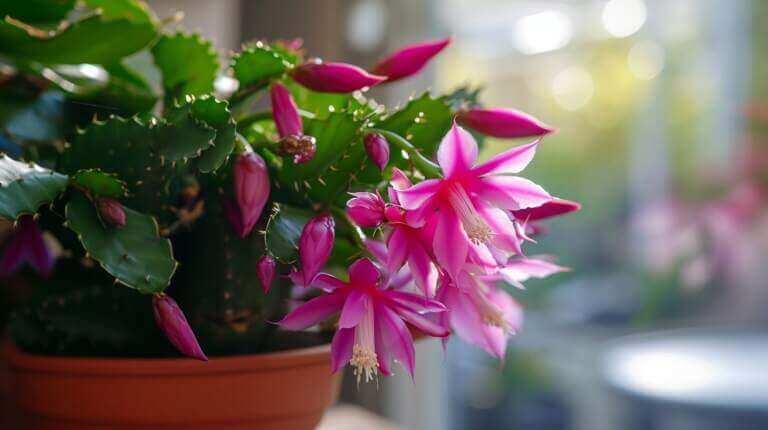Black Spots on ZZ Plant Stem? Causes and Solutions To Fix ZZ Plant Black Spots On The Stem
Are you concerned about the black spots on your beloved ZZ plant? Don’t worry, you’re not alone. These unsightly blemishes can be quite distressing, but fear not, as there are effective treatments available.
In this article, we will explore the causes behind these black spots, including overwatering, fungal infections, and pests.
Furthermore, we will provide you with valuable insights into how to treat and prevent these issues, ensuring your ZZ plant thrives and retains its natural beauty.
Key Takeaways
- Overwatering is a common cause of black spots on ZZ plants, leading to root rot and leaf discoloration.
- ZZ plants are susceptible to fungal infections, which can be prevented through proper watering and air circulation.
- Regular inspection of foliage and soil is necessary to control pests such as aphids, spider mites, and mealybugs.
- Prompt removal of affected leaves, providing proper ventilation, and maintaining a healthy environment are important for treating black spots on ZZ plants.
Common Causes of Black Spots on ZZ Plant Stem
One common cause of develop black spots on ZZ plants is overwatering, which can lead to root rot and subsequent leaf discoloration. ZZ plants, also known as Zamioculcas zamiifolia, are known for their hardiness and ability to tolerate a wide range of conditions. However, they are susceptible to certain issues when their care requirements are not met.
Overwatering is a common mistake made by ZZ plant owners. These plants have rhizomes, which are thick underground stems that store water. When the plant is overwatered, the rhizomes become waterlogged, leading to root rot. This can manifest as black spots on the leaves, as the roots are unable to absorb water and nutrients properly.
In addition to overwatering, nutritional deficiencies can also cause black spots on ZZ plants. These plants require a balanced fertilizer to thrive, and a lack of essential nutrients can result in leaf discoloration and spots. Common deficiencies include iron, magnesium, and nitrogen.
Environmental stressors can also affect the health of ZZ plants. These stressors include low humidity, extreme temperatures, and inadequate lighting. When the plant is exposed to these unfavorable conditions, it can weaken and become more susceptible to diseases and pests.
Understanding the causes of black spots on ZZ plants is crucial for effective treatment. By addressing issues such as overwatering, nutritional deficiencies, and environmental stressors, plant owners can restore their ZZ plants to good health and prevent further leaf discoloration and spots.
Now, let’s delve deeper into the connection between overwatering and root rot, and how it can impact the overall health of ZZ plants.
Can Overwatering and Root Rot Cause Black Spots On Your ZZ Plant?
Overwatering is one of the primary causes of root rot in ZZ plants. When excess moisture is present, fungal or bacterial pathogens take hold and begin decaying and rotting away the roots. As root rot progresses, the infection can spread from the damaged roots to the plant’s stems. On the stems, the pathogens cause black spots, lesions, and eventual dieback if the rotting continues unchecked.
To prevent root and stem rot due to overwatering, it is critical to allow the soil to dry out completely between waterings. ZZ plants prefer infrequent but deep watering. Using containers with bottom drainage holes and well-draining potting mixes also helps avoid moisture buildup. Checking that excess water can flow out prevents soggy soil.
If root rot has already begun, symptoms include yellow, drooping leaves, mushy brown roots with a foul odor, and potential black spots on stems. Treat root rot by reducing watering frequency, repotting in fresh sterile soil, pruning off any diseased roots, and applying a fungicide drench to kill pathogens. Catching and treating early can help stop fungal spread to the stems.
With vigilance in watering properly and quickly addressing any root rot, ZZ plant owners can help prevent problematic black spots from marring the appearance of the stems. Good airflow and moisture control is key.
Does Fungal Infections and Diseases Cause Black Spots On The Stem?
Yes, different fungal infections absolutely can cause black spots and lesions to form on ZZ plant stems. Fungal diseases that may lead to black stem spots include anthracnose, phytophthora blight, and botrytis stem and root rot. The fungi enter through wounds or unhealthy root zones and spread to stems.
Anthracnose initially forms water-soaked lesions on stems that turn black in center. Phytophthora blight causes black, water-soaked stem lesions and eventual crown rot. Botrytis stem and root rot leads to dark lesions and cankers on stems and leaves. All provide entry points for rot and wilting.
Preventing fungal diseases involves promoting air circulation, proper watering, and cleanliness. Avoid overwatering, space plants out, prune off infected parts, and use fungicides to treat outbreaks. Disinfect tools between plants.
If black spots on stems have occurred, isolate the plant and improve growing conditions. Increase light and airflow. Prune back severely infected stems and dispose of debris. Fungicide sprays or drenches can slow fungal spread. Cut off any mushy or rotten spots to save the rest of the plant. With prompt treatment, the ZZ can regrow healthy stems and foliage.
So in summary, various fungal pathogens can absolutely spread to stems and lead to development of black spots or lesions on ZZ plants when conditions are favorable for disease. Prevention and early treatment are key.
Here are three key points to consider:
- Proper watering: Overwatering creates a damp environment that promotes fungal growth. It is important to water your ZZ plant sparingly and allow the soil to dry out between watering sessions. This will help prevent excessive moisture and reduce the risk of fungal infections.
- Good air circulation: Proper air circulation is essential in preventing fungal spore spread. Ensure that your ZZ plant is placed in a well-ventilated area, away from stagnant air. You can also use a fan to improve air circulation and discourage the growth of fungi.
- Sterilize tools and pots: Fungal spores can easily transfer from contaminated tools and pots to healthy plants. To prevent this, regularly sterilize your gardening tools and pots by washing them thoroughly with a bleach solution. This simple step can significantly reduce the chances of fungal infections.
Pests and Infestations
To effectively combat pests and infestations in your ZZ plant, it is crucial to regularly inspect the foliage and soil, as well as implement appropriate measures to prevent their establishment and spread. Pests such as aphids, spider mites, and mealybugs can cause significant damage to your ZZ plant if left unchecked. These pests feed on the plant’s sap, resulting in stunted growth, yellowing leaves, and distorted foliage.
One method of pest control is to regularly inspect your ZZ plant for any signs of infestation. Look for tiny insects, webs, or sticky residue on the leaves. If you notice any of these signs, it is important to take immediate action to prevent the pests from spreading.
There are several natural remedies that can be effective in controlling pests on your ZZ plant. For example, a mixture of water and mild soap can be used to create a homemade insecticidal spray. Simply spray the affected areas of the plant, making sure to cover both the tops and bottoms of the leaves. Another natural remedy is neem oil, which can be diluted with water and sprayed onto the plant.
In addition to using natural remedies, it is important to create a healthy environment for your ZZ plant. This includes providing adequate lighting, proper watering, and maintaining good air circulation.
Effective Treatment Options for Black Spots on ZZ Plants
In order to effectively address the issue of black spots on ZZ plants, it is essential to identify the underlying cause and implement appropriate treatment measures, such as removing affected leaves and providing proper ventilation. Black spots on ZZ plants are usually caused by overwatering, fungal infections, or pest infestations.
Here are three treatment options and prevention tips to help you maintain a healthy ZZ plant:
- Natural remedies: To treat fungal infections, you can use natural remedies such as neem oil or a mixture of baking soda and water. These remedies help to control the spread of the fungus and promote plant recovery. Additionally, applying a diluted hydrogen peroxide solution can help control pests like spider mites or mealybugs.
- Remove affected leaves: If your ZZ plant has black spots, it is important to remove the affected leaves promptly. This will prevent the spread of the infection or infestation to other parts of the plant.
- Provide proper ventilation: ZZ plants thrive in well-ventilated areas. Ensure that your plant is placed in a location with good air circulation. This will help prevent the development of fungal infections and reduce the risk of pest infestations.
Frequently Asked Questions
Can Black Spots on the ZZ Plant Stem Cause the Plant to Droop? How Can I Revive the Plant if It’s Drooping?
Yes, black spots on the ZZ plant stem can indeed cause the plant to droop. These black spots are often a sign of root rot, which prevents the roots from absorbing water properly. To revive a drooping ZZ plant, you need to address the root rot issue. Start by carefully removing the plant from its pot, trimming any affected roots, and repotting it in dry soil. Be sure to let the soil dry thoroughly between waterings and avoid overwatering. Additionally, ensure the plant receives adequate light and temperature conditions to promote healthy growth. How to revive a drooping zz plant is a process that requires patience and proper care.
Can ZZ Plants Get Black Spots From Being Exposed to Too Much Sunlight?
ZZ plants are known for their ability to tolerate low light conditions, making them a popular choice for indoor environments. However, excessive exposure to direct sunlight can lead to black spots on the leaves.
These spots are not a common symptom of sun damage in ZZ plants, but rather an indication of other issues such as fungal or bacterial diseases. It is important to ensure the plant receives the appropriate amount of light and to address any underlying diseases promptly to maintain its health and appearance.
Can Black Spots on the ZZ Plant Stem Cause the Plant to Droop? How Can I Revive the Plant if It’s Drooping?
Yes, black spots on the ZZ plant stem can indeed cause the plant to droop. These black spots are often a sign of root rot, which prevents the roots from absorbing water properly. To revive a drooping ZZ plant, you need to address the root rot issue. Start by carefully removing the plant from its pot, trimming any affected roots, and repotting it in dry soil. Be sure to let the soil dry thoroughly between waterings and avoid overwatering. Additionally, ensure the plant receives adequate light and temperature conditions to promote healthy growth. How to revive a drooping zz plant is a process that requires patience and proper care.
Can Cleaning ZZ Plant Leaves Help Get Rid of Black Spots on the Stem?
Cleaning ZZ plant leaves regularly can indeed help get rid of black spots on the stem. Dust and dirt can accumulate on the leaves, creating a breeding ground for pests and diseases. By using gentle, damp cloth or a soft brush to wipe the leaves, you can keep them clean and healthy. Following these tips for shiny ZZ plant leaves can contribute to overall plant wellness and prevent unsightly black spots.
Can Black Spots on ZZ Plants Be an Indication of a Larger Underlying Problem With the Plant’s Overall Health?
Black spots on ZZ plants can potentially indicate a larger underlying problem with the plant’s overall health. These spots may be caused by various factors such as overwatering, fungal or bacterial infections, or pest infestations.
It is important to address these issues promptly to prevent further damage to the plant. Regularly inspecting and maintaining the plant’s health, providing proper watering and lighting conditions, and promptly treating any signs of disease or pests can help prevent the occurrence of black spots on ZZ plants.
Why does my ZZ plant have black spots?
Black spots on your ZZ plant’s leaves or stems can be caused by various factors. It could be a sign that your plant is suffering from overwatering, leading to root or stem rot.
What causes ZZ plant black spots?
Black or brown spots on the leaves or stem of your ZZ plant can develop due to overwatering, poor drainage, or exposure to cold temperatures.
How can I prevent black spots on my ZZ plant?
To prevent black spots, it’s important to water your plant properly. Overwatering can lead to root rot, which often manifests as black or brown spots on the plant.
How do I fix ZZ plant black spots on stem?
To fix black spots on the zz plant, you should first identify the cause of the black spots. If it’s due to overwatering then it may be caused by caused by root or stem, you may need to adjust your watering schedule. If the entire plant is affected, you may need to repot the plant in fresh soil.
The key ways to fix and prevent future black spots on ZZ plant stems are:
- Improve growing conditions – Provide bright, indirect light and avoid overwatering that can lead to fungal or bacterial diseases.
- Prune affected stems – Cut off any stems with black spots at the base to prevent spread. Sterilize pruning tools between cuts.
- Apply fungicide – Use a fungicide spray or soil drench to kill pathogens causing spots. Repeat applications may be needed.
- Increase air circulation – Space ZZ plants out and use fans to prevent moist conditions fungi need.
- Monitor regularly – Catch any new black spots early before extensive damage occurs.
- Be patient – It takes time for new, healthy stems to regrow after pruning. But improved care will prevent future spots.
How do I keep my ZZ plant healthy?
To keep your ZZ plant healthy, ensure it has well-draining soil and is watered appropriately. Avoid placing it in areas with cold drafts or direct sunlight.
What are the dark spots on my ZZ plant?
Dark spots on your ZZ plants can be caused by root or stem rot, often caused by overwatering or poor drainage, which mean the ZZ plant has a fungal infection
How do I get rid of black spots on my ZZ plant?
To get rid of black spots, you may need to get rid of zz plant affected parts of the plant and ensure it’s receiving proper care moving forward.
Why are there black spots on my ZZ plant stem?
Black spots on the stem of the zz plant could indicate a problem with overwatering or disease. It’s important to diagnose the issue correctly to provide appropriate treatment.
Are black spots on ZZ plants dangerous?
While not immediately dangerous, black spots on a zz plant stems can be a sign of stress or cause be overwatering. If left untreated, it could harm the entire plant and be fatal for your plant
What are some tips for ZZ plant care to avoid black spots? d
Some tips for ZZ plant care include proper watering, ensuring good drainage, keeping your plant in a warm location with indirect light, and regularly checking for signs of disease such as black spots.







